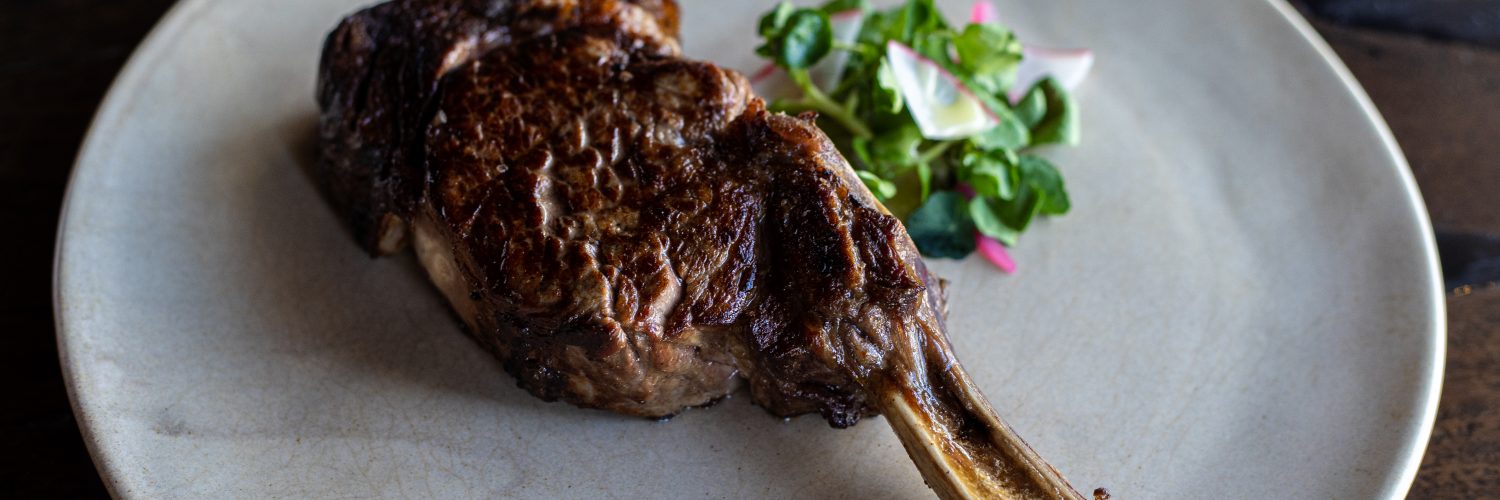There is an art to cooking a juicy, mouth-watering steak at home, and it goes well beyond throwing any old slab of beef on the barbecue. Meat master and BLACK Bar & Grill executive chef Dany Karam shares his top 7 secrets for achieving restaurant-quality steak every time.
1. Choose your steak
Whether you prefer a flavour-packed rump steak, a succulent wagyu sirloin or a light and tender fillet, make sure you’re getting a quality cut from your local butcher.
Some cuts taste better on the rarer side while others are best served medium-rare to medium. Your butcher will be able to advise you where the meat was sourced, whether it was grain or grass-fed and how it should be cooked. I recommend asking for grass-fed steak in spring and switching to grain-fed beef in winter.

If you’re a beginner and don’t have a preference, you might want to stick to cuts with a bit of fat on them, such as a sirloin or scotch fillet. Leaner cuts, like an eye fillet, are easy to overcook and will go tough and dry due to their lower fat content.
2. Bring it to room temperature
Take the steak out of the fridge at least half an hour to an hour before you intend to cook it and bring it to room temperature. This allows the muscles to relax and will ensure the steak cooks through evenly.
At BLACK Bar & Grill, we use a second grill to cold-smoke the steak over cherry wood for about 10 minutes before it goes on the hot grill over iron bark.

3. Get your grill hot
Make sure your barbecue, grill or pan is piping hot. Cooking your steak in a warm pan will cause it to stew. The same goes for overcrowding the pan – steaks need to be cooked on a roomy surface or the temperature will drop, so don’t try to throw too many on at once or you will end up with grey, rubbery meat. I prefer to use natural fuel where possible – wood or charcoal is best.

4. Season simply
When it comes to seasoning, keep it simple and let the flavour of the meat shine through. Give your steak a generous pinch of quality salt, such as Murray River Pink Salt, right before cooking. Salt brings out flavour and helps with the caramelisation and creating that delicious crust. You could also add cracked pepper.
At BLACK, we brush the steak with rendered Wagyu fat and season with pink salt – that’s it. People think we marinate our steak. I don’t want to; I really want you to taste the steak and the way we cook it.

5. Sear and seal
Once your surface is hot, sear the steak on one side for a minute or so to seal in the flavour and create a brown crust, and then flip it to the other side. Heat pushes the juice out of the meat, so the aim is to sear the steak on both sides and seal the juice inside. Don’t be tempted to sear it for too long on one side or it won’t cook evenly.

6. Keep it moving
After searing the steak on both sides, move it to a slightly lower heat and continue to flip it every minute. This is to prevent the heat from pushing the juice out of the other side and allow the inside to cook without scorching the crust.
How long you cook the steak for will depend on the thickness and cut and whether you prefer the meat rare, medium-rare, medium or well done. Heat travels faster through fat, for example, so if you’ve got Wagyu with a Marble Score of 9, that will cook faster. I like my steak medium rare. Knowing when your steak is ‘done’ takes practice – seasoned chefs should be able to feel when the meat is perfectly cooked.

7. Let it rest
Once your steak is cooked to your liking, take it off the heat and let it rest for about five minutes. A lot of mistakes happen when people take the steak off the heat and start slicing straight away – you have to let it rest. This allows the muscles to relax, and the juices to redistribute through the meat, evening out the flavour. It should also ensure juices don’t run out onto your plate when you cut into the meat.

Dany Karam
As executive chef of @BLACKbargrill and @BarTikram at The Star Sydney, Dany Karam combines his Lebanese heritage with the wealth of experience he has cultivated in fine dining institutions around the world . The award-winning chef took the reigns at BLACK Bar & Grill in 2014 and has helped make the bar and grill one of Australia’s most respected steak houses.














